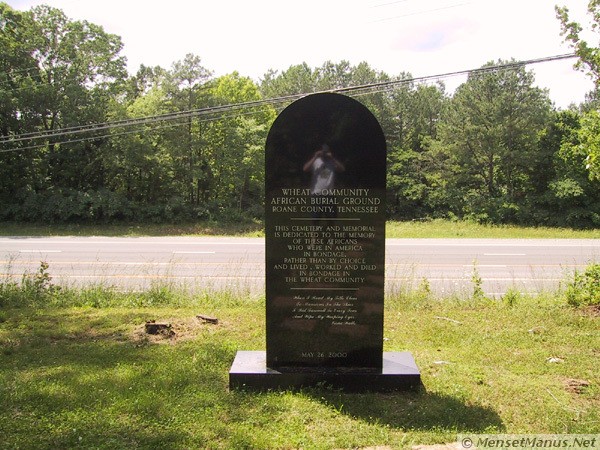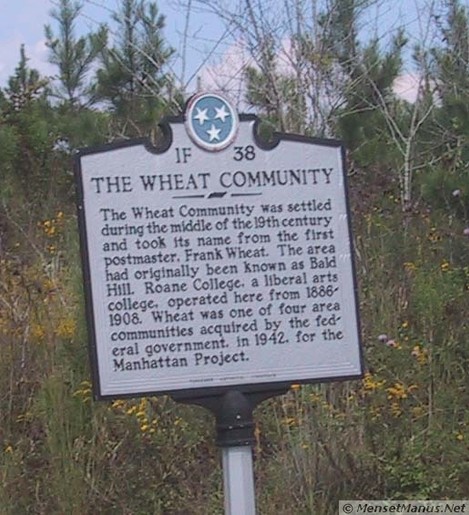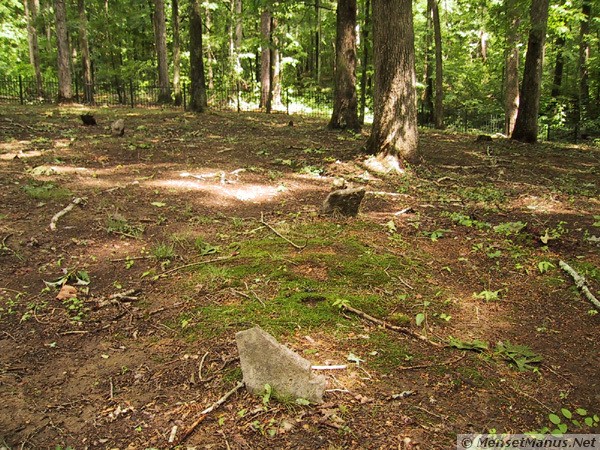Wheat Community African Burial Ground
Introduction
Text-to-speech Audio
Images
Memorial at Wheat Community Burial Ground.

Wheat Community Historic Marker.

Section of Burial Ground. Rocks jutting out of ground are the 'headstones' for buried slaves.

Backstory and Context
Text-to-speech Audio
The earliest settlers of Wheat Community moved into the area in the late 18th century. However, it was not until 1846 that the area was established as the community of Bald Hill. The name was changed to Wheat in 1880, when a post office was opened, and the community took the name of its first postmaster, Frank Wheat.
Early farming residents included John Henry and Elizabeth Inman Welcker. They owned Laurel Banks plantation on the Clinch River from the early nineteenth century until c. 1840. Records from the time show that the Welckers were active in the purchase and sale of slaves. George Hamilton Gallaher purchased the property in the 1840’s, and it was then rechristened as the Gallaher-Stone Plantation. The Wheat Community African Burial Ground and Gallaher-Welcker Cemetery still survive as structures to this day.
The African Burial Ground was long forgotten for some time, but the site was found in 2000 by Will Minter and was soon cleaned up and marked by U.S. Department of Energy personnel and volunteers. At least some of those buried in the African Burial Ground are believed to have been part of the Gallaher-Stone Plantation; a monument to those held in slavery is on the cemetery grounds.
It is presumed by many that slaves who once belonged to the Welckers and Gallahers, and a certain amount of their descendants, are buried in this gravesite. It is also possible that slaves and their descendants who lived on other farms in the area are buried here. There were other slave-owning families in the area, and it’s possible that some workers of theirs were also interred nearby. As of this writing, the names of certain parties buried in the area may never be known.
Cite This Entry
Crawford, Caleb, Mike Emett on behalf of Marshall University Libraries, and Franklin Clark. "Wheat Community African Burial Ground." Clio: Your Guide to History. July 7, 2020. Accessed July 28, 2025. https://theclio.com/entry/15765
Sources
Wheat Community African Burial Ground. Waymarking. September 24, 2007. Accessed October 10, 2018. http://www.waymarking.com/waymarks/WM28YQ_Wheat_Community_African_Burial_Ground.
Day Trip Through Historic East Tennessee. Whitestone Country Inn. n d. Accessed October 10, 2018. https://whitestoneinn.com/historic-east-tennessee/#more-3767.
Shearer, John. Slave cemetery registry intended to document more local Black history, Knoxville News Sentinel. February 22nd 2011. Accessed July 7th 2020. http://archive.knoxnews.com/news/local/slave-cemetery-registry-intended-to-document-more-local-Black-history-ep-406162578-358068881.html.

